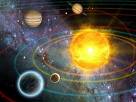Homeworks 9: Difference between revisions
(Description and Infobox) |
(Image update) |
||
| Line 3: | Line 3: | ||
|+align="bottom" style="color:#AAAAAA;"|''Homeworks 9'' | |+align="bottom" style="color:#AAAAAA;"|''Homeworks 9'' | ||
|<center><big>'''Homeworks 9'''</big></center> | |<center><big>'''Homeworks 9'''</big></center> | ||
[[Image:Solarsystem. | [[Image:Solarsystem.jpeg|thumb|center]] | ||
<!-- EMBEDDED TABLE --> | <!-- EMBEDDED TABLE --> | ||
{| align="center" border="0" cellpadding="5" cellspacing="0" width="240" | {| align="center" border="0" cellpadding="5" cellspacing="0" width="240" | ||
| Line 12: | Line 12: | ||
|- valign="top" | |- valign="top" | ||
| '''Chapters''' | | '''Chapters''' | ||
| | | 19 - 22 | ||
|- valign="top" | |- valign="top" | ||
| '''Lectures''' | | '''Lectures''' | ||
| | | 27 - 30 | ||
|} | |} | ||
<!-- END OF EMBEDDED TABLE --> | <!-- END OF EMBEDDED TABLE --> | ||
| Line 21: | Line 21: | ||
<!-- END OF INFOBOX --> | <!-- END OF INFOBOX --> | ||
'''Homework 9''' | '''Homework 9''' is the attempted solution to our 9th assignment in the course [[AST4210_5211: Introduction to Astrophysics - Fall 2009|Introduction to Astrophysics]]. This assignment was assigned on the week of November 1st and the due date was initially 11/16/2009 due to a typo it was moved up a week to ''Monday 11/09/2009''. Professor Hoeflich will still accept the homework next day Tuesday 11/10/2009 at his office hours (1:25 PM 614 Keen). | ||
This assignment covers Chapters | Solutions were created by Group 1 (RyanT, [[User:KimberlyWynne|KimW]], SaraC, ZackM, and TiaraD) to be completed by Friday 11/13/09. | ||
This assignment covers Chapters 19 through 22 in the book, Lectures 27 through 30. The topics in this assignment deal with the makeup of our solar system: the sun, planets & their moons, asteroids & the belt, comets, meteroids, dust and gas. | |||
==Problem 1== | ==Problem 1== | ||
Revision as of 17:51, 12 November 2009
| ||||||||
Homework 9 is the attempted solution to our 9th assignment in the course Introduction to Astrophysics. This assignment was assigned on the week of November 1st and the due date was initially 11/16/2009 due to a typo it was moved up a week to Monday 11/09/2009. Professor Hoeflich will still accept the homework next day Tuesday 11/10/2009 at his office hours (1:25 PM 614 Keen).
Solutions were created by Group 1 (RyanT, KimW, SaraC, ZackM, and TiaraD) to be completed by Friday 11/13/09.
This assignment covers Chapters 19 through 22 in the book, Lectures 27 through 30. The topics in this assignment deal with the makeup of our solar system: the sun, planets & their moons, asteroids & the belt, comets, meteroids, dust and gas.
Problem 1
What are the compositions of meteorites? How do we know that most meteorites used to be part of larger bodies?
Problem 2
Name all the different kinds of objects found in the solar system. Give three distinguishing characteristics of each.
Problem 3
Make a table comparing the atmospheres of the Earth, Venus, and Mars. List the two most important gasses, the typical temperatures, and typical pressures in terms of the Earth’s atmospheric pressure. Describe briefly the formation of the atmosphere of each of them (use the atmospheric escape parameters for various components).
Problem 4
Name Jupiter’s four Galilean moons in order from the closest to the most distant from Jupiter. Give a distinctive characteristic of each moon. Why does the closest moon have such strong tectonic activity? Estimate the tidal force on each of them.
Problem 5
Assume that the initial atmosphere of Mars would consist of H/He. Calculate the escape parameter for a H/He atmosphere for Mars. Estimate the particle density in a primordial upper atmosphere assuming a temperature of 1000K. Assume that the particle density of H/He is the same as todays Mars atmosphere. How long would it take for a H/He atmosphere to evaporate?
